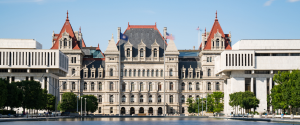The Federal Reserve Chair, Janet Yellen, announced on Wednesday that the Federal Reserve had raised the federal funds rate by a one-quarter of one percent. The rate-hike is a clear indication that central bank leaders feel confident in the economic numbers, with Yellen saying that as the economy continues to grow and employment markets tighten, there will likely be another increase later this year.
The increase marks the third time in six months that policy makers have raised rates, and it brings the lending benchmark rate to a range of between 1 and 1.25 percent. The central bank also released its quarterly projections for 2018 and 2019, mostly maintaining the need for three quarter-point increases each year. If the economy performs as expected over that time, the increases will place the federal funds rate at about 3 percent by the end of 2019.
Recent economic data shows that unemployment in the U.S. dropped to 4.3 percent in May, the lowest joblessness rate in 16 years. While Fed policy makers left their median inflation projection unchanged for 2018 and 2019 at 2 percent, they lowered this year’s forecast to 1.6 percent from the 1.9 percent projected at the end of Q1. According to the central bank, the economy is expected to continue to grow at a 2.2% clip for 2017.
The federal funds rate is the interest rate at which banks lend money to one another overnight to meet reserve requirements. The Fed uses this key indicator to control the supply of currency, manage lending rates, and control inflation.
Although fixed-rate mortgages are closely tied to the federal funds rate, mortgage rates have been falling over the last month to 4.04 percent on June 7. Housing experts expect rates to rise over the remainder of the year, however, they feel confident they will remain low by historical standards.
Adjustable-rate mortgages (ARMs) and home equity lines of credit (HELOCs), which are more sensitive to central bank increases, will move upward after the Fed hike. While mortgages with ARMs will see interest rates adjust slightly over the next several months, those homeowners with HELOCs will see their interest rate increase a full quarter percent by next month.
With inflation remaining relatively low and the Fed reducing their inflation forecast for the rest of 2017, economic analysts believe that the Fed’s desire to continue raising rates will subside, as long as GDP growth remains steady and inflation stays under two percent.






